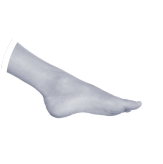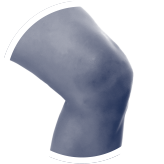
Whether you’re training for your first 5k or preparing to break a marathon personal best, running is an excellent way to stay fit, healthy, and mentally resilient.
However, back pain can be an unwelcome obstacle for runners at all levels. At London Bridge Orthopaedics, we frequently work with runners, from beginners to elite athletes, helping them manage and prevent spinal issues so they can stay active and injury-free.
In this blog, we’ll take a closer look at why running can cause back pain, the most common conditions we see, and how to treat and prevent them.
Anatomy of the Spine
The spine is an intricate, highly engineered structure, which is composed of 33 vertebrae, intervertebral discs, muscles, tendons, and ligaments. It is divided into five regions – cervical (neck), thoracic (mid-back), lumbar (lower back), sacral, and coccygeal (tailbone).
The spine provides support, mobility, and protection for the spinal cord, and it acts as a shock absorber for the body. Healthy spinal alignment and strength are essential for maintaining good running form. However, because running generates repetitive impact forces through the lower back, it can sometimes overwhelm the spine’s natural support structures, particularly when technique, footwear, strength, or mobility are lacking, or if your load and training is not properly managed.
Why Running Can Cause Back Problems
Running, especially on hard surfaces or over long distances, generates considerable repetitive load through the body. With each foot strike, the spine absorbs impact forces that can be up to 2.5 times your body weight.
Over time, or if the spine’s stabilising muscles are weak, these forces can lead to tissue strain, joint irritation, and disc problems.
In short-distance running, back pain often stems from explosive effort, muscle tightness, or technique faults such as overstriding. In long-distance running, back issues tend to arise from cumulative fatigue, poor core endurance, and biomechanical compensation patterns.
Factors such as running technique, footwear, strength, flexibility, and even psychological stress can all contribute to the onset of back pain in runners.
Who is Most Susceptible to Running-Related Back Pain?
While anyone can experience back pain when running, certain groups are more vulnerable, including:
- Beginners: Poor technique, inadequate conditioning, and sudden increases in mileage can overload the back.
- High-mileage runners: Repetitive strain and insufficient recovery can lead to chronic back issues.
- Older runners: Natural age-related degeneration of the spine and discs can make injury more likely.
- Runners with a history of back problems: Previous injuries weaken spinal structures.
- Athletes with poor core strength or flexibility: Weak abdominal muscles and tight hip flexors or hamstrings can increase stress on the lumbar spine.
Understanding your risk factors can help you take steps to protect your back while running.
Six Common Back Problems in Runners
At London Bridge Orthopaedics, the most common running-related back conditions we see are:
1. Muscular Strain
Overuse or sudden overloading of spinal muscles, particularly in the lower back, can cause painful muscle strains.
Treatment:
- Rest, ice, and gentle stretching.
- Physiotherapy for strengthening and flexibility exercises.
- Gradual return to running with proper warm-up routines.
2. Facet Joint Irritation
Small joints at the back of the spine can become inflamed due to repetitive impact or poor running mechanics.
Treatment:
- Anti-inflammatory medication.
- Physiotherapy for manual therapy and joint mobilisations.
- Guided strength training and technique adjustments.
3. Lumbar Disc Herniation
Prolonged or excessive loading can cause bulging or herniated discs, leading to nerve compression and sciatica symptoms.
Treatment:
- Physiotherapy focused on core stability and nerve mobilisation.
- Epidural steroid injections for severe nerve irritation.
- Surgical referral in rare cases where conservative treatment fails.
4. Sacroiliac (SI) Joint Dysfunction
The SI joints connect the spine to the pelvis. Imbalance, muscle tightness, or asymmetrical running patterns can lead to inflammation and pain.
Treatment:
- Manual realignment techniques.
- SI joint stabilisation exercises.
- Biomechanical analysis and correction of running form.
5. Stress Fractures
Although rare, repetitive stress on the lumbar vertebrae (particularly in long-distance runners) can lead to hairline fractures.
Treatment:
- Complete rest from running for 6–8 weeks.
- Gradual reintroduction to activity guided by imaging and symptoms.
- Address underlying issues like low bone density or training errors.
6. Degenerative Disc Disease
Age and repetitive spinal loading can lead to wear-and-tear of the intervertebral discs, reducing their shock-absorbing ability and causing chronic pain.
Treatment:
- Strengthening programs focused on spinal stabilisers.
- Pain management with injections if necessary.
- Lifestyle adaptations including cross-training and footwear changes.
At LBO, our multidisciplinary approach ensures that runners receive expert advice and treatment tailored to their specific diagnosis and goals.
Preventing Back Pain While Running
The good news is that many running-related back problems are preventable. Here are some key strategies:
- Strengthen Your Core: A strong core reduces strain on the spine during running.
- Gradually Increase Mileage: Avoid sudden spikes in training load.
- Invest in Good Footwear: Shoes should offer the right support for your foot type and running style.
- Focus on Running Form: Avoid overstriding and aim for a slight forward lean. Keep your footsteps light and your cadence high.
- Incorporate Cross-Training: Activities like swimming, cycling, and yoga can build complementary strength and flexibility.
- Prioritise Recovery: Regular stretching, foam rolling, and rest days are essential to prevent overload injuries.
Listening to your body and addressing small niggles early can help you avoid more serious issues later.
Meet Our Spinal Specialists – Mr Pavlos Panteliadis and Mr Bahram Fakouri
At London Bridge Orthopaedics, we are proud to have two highly experienced consultant spinal specialists, Mr Pavlos Panteliadis and Mr Bahram Fakouri, as part of our team.
Both consultants are experts in diagnosing and managing sports-related spinal conditions, ranging from acute disc herniations to chronic degenerative issues affecting athletes. They work closely with physiotherapists, radiologists, and other healthcare professionals to deliver comprehensive care tailored to each runner’s needs – ensuring a rapid and safe return to sport wherever possible.
Their approach is always conservative-first, favouring physiotherapy and other non-invasive treatments as an initial treatment option. They are also able to offer targeted joint injections, and minimally invasive options when necessary. If surgery is required, they are highly skilled in advanced techniques that allow for quicker recovery times, meaning you can get back to doing what you love sooner.









